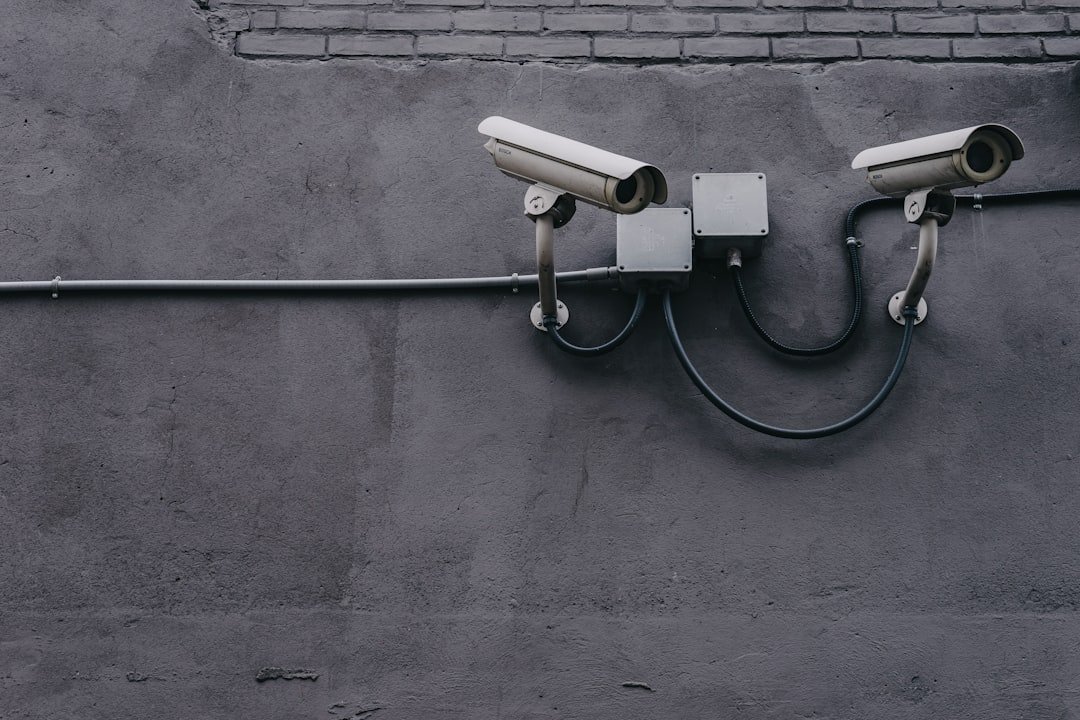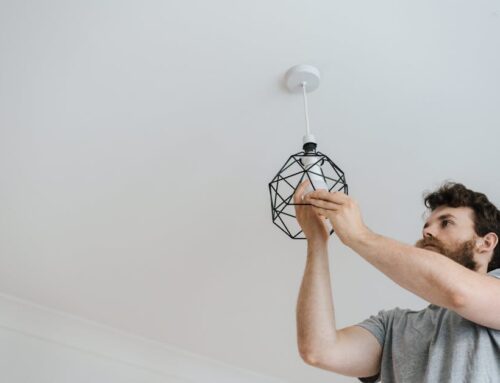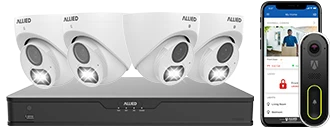Current State of Home Security in Austin
Home security in Austin, Texas, currently encompasses a variety of methods and technologies aimed at safeguarding residences against intrusions and emergencies. The city has witnessed an increasing adoption of both traditional and modern security systems, reflecting broader trends in home security across the United States.
Traditional home security solutions in Austin often include alarm systems, motion detectors, and surveillance cameras. These systems are generally monitored by third-party security companies, which can dispatch law enforcement or emergency services when an issue is detected. Over time, these systems have been enhanced to improve response times and reduce the number of false alarms.
Austin has also embraced more advanced and automated security technologies. Modern home security systems frequently integrate smart technologies with features such as remote monitoring, mobile alerts, and integration with home automation platforms. These advancements offer homeowners greater control and flexibility in managing their security.
Many homeowners in Austin are also investing in security systems that use high-definition video surveillance. These systems often include features like night vision, wide-angle lenses, and cloud storage for recorded footage. The benefit of high-definition surveillance is that it provides clearer evidence in the event of a security breach, potentially aiding law enforcement in investigations.
The rise of DIY home security solutions has also become prevalent in Austin. Products from companies like Ring, Nest, and SimpliSafe allow homeowners to customize and install their security systems without professional assistance. These systems often connect to smartphones, allowing users to monitor their homes in real-time regardless of their location.
In terms of police involvement, the Austin Police Department has initiated various community programs aimed at promoting better home security practices. Programs such as the Neighborhood Watch have been effective in educating residents about the importance of vigilance and how to properly use their security systems.
- Increasing adoption of smart home security systems
- Enhanced features in traditional alarm systems
- Greater use of high-definition video surveillance
- Growth of DIY security solutions
- Community programs supporting home security
Overall, the current state of home security in Austin is characterized by a blend of traditional methods and cutting-edge technology, supported by community and law enforcement initiatives. This multifaceted approach provides robust protection and sets the stage for future advancements in home security practices.
Technological Advancements in Home Security
Technological advancements are set to revolutionize home security in Austin over the next five years. Technologies such as artificial intelligence (AI), machine learning, and cloud computing are being integrated into security systems, offering more sophisticated and comprehensive protection.
One significant advancement is the use of AI-powered surveillance cameras. These cameras can distinguish between humans, animals, and inanimate objects, reducing the number of false alarms and providing more accurate alerts. For example, modern AI systems can identify suspicious behaviors and notify homeowners or security personnel in real-time.
Another critical development is the integration of biometric authentication. Traditional locks and keys are being supplemented or replaced by systems that use fingerprints, facial recognition, or even retinal scans to grant access. These methods are significantly harder to bypass compared to conventional security measures.
Cloud computing is also enhancing the security landscape. The cloud allows for the storage and analysis of large volumes of data collected from various security devices. This data can be accessed remotely, providing homeowners with real-time updates and the ability to monitor their property from anywhere.
Moreover, advancements in wireless technology are making security systems more flexible and easier to install. Wireless sensors, cameras, and alarms can be placed in strategic locations without the need for extensive wiring, which is both time and cost-efficient.
The following table highlights some of the key technological advancements expected to impact home security in Austin:
| Technology | Potential Impact |
|---|---|
| AI-powered Surveillance | More accurate detection and reduced false alarms |
| Biometric Authentication | Enhanced security through hard-to-bypass systems |
| Cloud Computing | Remote monitoring and real-time data analysis |
| Wireless Systems | Increased flexibility and ease of installation |
In conclusion, the next five years will likely see substantial technological advancements in home security in Austin. These innovations will not only improve security but also provide homeowners with more peace of mind and convenience.
Role of Smart Homes and IoT in Future Security Solutions
The integration of smart homes and the Internet of Things (IoT) into future security solutions is set to revolutionize the home security landscape in Austin over the next five years. The adoption of these technologies is driven by their potential to offer enhanced security, convenience, and energy efficiency.
One of the key aspects of smart home security systems is their ability to create an interconnected network of devices. These devices can communicate with each other and be controlled remotely via smartphones or other internet-enabled devices. This interconnectedness allows homeowners to monitor and manage their home security systems in real-time, regardless of their physical location.
IoT-enabled security devices, such as smart cameras, doorbells, and locks, offer significant improvements over traditional security systems. For instance:
Smart Cameras: Equipped with features like motion detection, facial recognition, and night vision, smart cameras can provide live video feeds and send alerts to homeowners in the event of suspicious activity. - Smart Doorbells: These devices enable residents to see and communicate with visitors at their doorstep through their smartphones, even when they are not home.
- Smart Locks: Offering keyless entry options, smart locks can be locked or unlocked remotely. They can also grant temporary access to visitors such as delivery personnel or guests.
Artificial Intelligence (AI) and machine learning algorithms are increasingly being integrated into smart home security systems as well. These technologies can analyze data from various sensors and devices to identify patterns and predict potential security threats. This proactive approach to security allows for quicker response times and more accurate threat detection.
Moreover, the use of cloud-based services is becoming more prevalent in smart home security. Cloud storage solutions enable secure, off-site storage of surveillance footage, ensuring that data is not lost even if the physical security system is compromised. Additionally, cloud services facilitate software updates and system maintenance, ensuring that security measures are always up-to-date.
Another important factor is the integration of smart home security systems with other smart home devices. For instance, smart lighting systems can be programmed to turn on automatically when motion is detected, deterring potential intruders. Home automation can also extend to adjusting thermostats, managing electrical appliances, and more, further enhancing the security and efficiency of the home.
The implementation and adoption of these technologies in Austin are supported by growing consumer interest and advancements in wireless communication technologies such as 5G. The increase in network speed and reliability provided by 5G will facilitate faster data transmission and more reliable performance of IoT devices.
In summary, the role of smart homes and IoT in future security solutions is central to the ongoing evolution of home security systems in Austin. As these technologies continue to develop, they offer significant potential for improving the safety, convenience, and overall quality of life for homeowners.
Regulatory and Legal Framework Affecting Home Security
The regulatory and legal framework surrounding home security in Austin is pivotal to understanding the landscape over the next five years. These frameworks ensure that technological advancements are implemented safely and ethically, balancing innovation with privacy and security concerns.
Current Regulations
As of now, various local and federal laws regulate home security systems in Austin. The most relevant of these are the surveillance and data protection laws. Surveillance laws dictate where and how video cameras can be installed, ensuring that they do not infringe on public or private spaces without consent. Data protection laws, such as the Texas Privacy Protection Act, provide guidelines on how personal data collected through security systems should be stored, processed, and shared.
Anticipated Legal Changes
Over the next five years, several changes are expected in the regulatory environment:
- Stricter Data Privacy Regulations: With growing concerns over data breaches and misuse, regulations are likely to become more stringent. There will likely be more comprehensive guidelines on consent, data storage, and third-party access.
- Increased Surveillance Oversight: As camera and sensor technologies become more advanced, new laws may be enacted to ensure these tools are used ethically. This could include measures to prevent undue surveillance and ensure that monitoring is non-discriminatory.
- Standardization of IoT Security: Given the pervasive adoption of IoT devices in home security, standards for the security of these devices are expected to become more robust. This could involve regulations mandating cybersecurity measures to protect against hacking and unauthorized access.
Enforcement and Compliance
Enforcement of these laws and regulations falls to a mix of state and federal agencies, including the Texas Department of Public Safety and the Federal Trade Commission. These bodies are responsible for ensuring compliance through routine checks and responding to complaints and breaches. Penalties for non-compliance can range from fines to more severe legal action, depending on the nature and severity of the violation.
Impact on Consumers and Providers
For consumers, a more robust regulatory framework means better protection and more confidence in using advanced home security systems. They can expect clearer information on their rights and the security measures in place to protect their data.
For security providers, these regulations necessitate staying updated with legal requirements and investing in compliant technologies. Providers will need to focus on transparency and customer education to maintain trust and market competitiveness.
Collaboration and Future Outlook
Effective regulatory frameworks require collaboration among government bodies, private companies, and consumer advocacy groups. As the landscape evolves, stakeholders must work together to shape regulations that foster innovation while protecting citizens.
Overall, regulatory and legal frameworks will play a crucial role in shaping the future of home security in Austin, ensuring that advancements benefit everyone safely and fairly.
Consumer Trends and Market Projections
In the coming five years, the home security market in Austin is expected to be influenced significantly by evolving consumer trends and market dynamics. These factors will shape both the demand and supply sides of the industry, guiding the development of future home security solutions.
Personalization stands out as a growing trend. Consumers are increasingly seeking tailor-made security systems that cater to their specific needs. Companies that offer customizable features and flexible plans are anticipated to dominate the market. As of recent data, about 60% of consumers prefer security systems that they can personalize, from selecting device types to defining alert protocols.
Another key trend is the rising adoption of integrated smart home systems. Users are looking for seamless integration between their security systems and other smart home devices such as lights, thermostats, and voice assistants. A report by MarketsandMarkets estimates that the smart home market is projected to grow at a compound annual growth rate (CAGR) of 14.2% from 2021 to 2026, indicating strong potential for interconnected security solutions.
Remote monitoring and control capabilities are also becoming increasingly popular. Consumers desire the ability to manage their home security systems via smartphones and tablets, making remote access a crucial feature. According to a survey by Statista, 54% of Americans are interested in home monitoring systems accessible through mobile devices, highlighting a clear market demand.
In terms of market projections, Grand View Research forecasts the global home security system market size to reach $78.9 billion by 2025, expanding at a CAGR of 8.7% over the forecast period. While this data is global, Austin can expect a reflective growth pattern, driven by the city’s expanding population and increasing awareness of
home security solutions.
Furthermore, environmental sustainability is expected to play a more prominent role in consumer choices. Eco-friendly security options, such as solar-powered cameras and systems made from recycled materials, are gaining traction. Companies investing in sustainable practices may gain a competitive edge as environmental consciousness rises among consumers.
Lastly, consumers are becoming more aware of the importance of data privacy and security in home security solutions. Trust in the security provider, coupled with transparency about data usage and adequate protection measures, will be critical in shaping consumer preferences.
Overall, the next five years present significant opportunities for growth and innovation in the home security market in Austin, driven by personalized, integrated, and sustainable security solutions, with robust remote capabilities and strong data privacy safeguards.
Challenges and Opportunities for Home Security in Austin
As Austin evolves technologically and demographically over the next five years, several challenges and opportunities will shape the future of home security in the area. These factors will have significant implications for residents, businesses, and service providers alike.
Challenges
Cybersecurity Risks: The increasing reliance on smart home devices and Internet of Things (IoT) technologies poses a growing risk for cyber-attacks. Vulnerabilities in these interconnected systems can be exploited by hackers, leading to unauthorized access and potential breaches of personal information.
Privacy Concerns: Advanced home security systems often involve continuous monitoring and data collection, which can raise privacy issues. Ensuring that the collected data is securely stored and used ethically is crucial to maintaining consumer trust.
Cost and Accessibility: The installation and maintenance of cutting-edge security systems can be expensive. Ensuring that these technologies are accessible to all residents, including those in lower-income brackets, is essential for widespread adoption and the overall enhancement of community safety.
Opportunities
Integration with Smart City Initiatives: Austin is increasingly adopting smart city technologies. Integrating home security systems with city-wide surveillance and emergency response infrastructure can provide a more comprehensive security network, offering enhanced safety for residents.
Innovation and Local Startups: Austin’s vibrant tech ecosystem presents opportunities for innovation in the home security sector. Local startups and tech companies can collaborate to develop tailored security solutions that address the unique needs of the community.
Educational Outreach and Training: Educating residents about the benefits and risks associated with modern home security systems can drive informed decision-making. Offering training on how to operate and secure these systems can also mitigate potential security threats.
In summary, while the future of home security in Austin is poised for growth and technological advancement, addressing the challenges of cybersecurity, privacy, and accessibility will be crucial. Enabling opportunities through community integration, local innovation, and education can pave the way for a more secure and resilient future for all residents.












